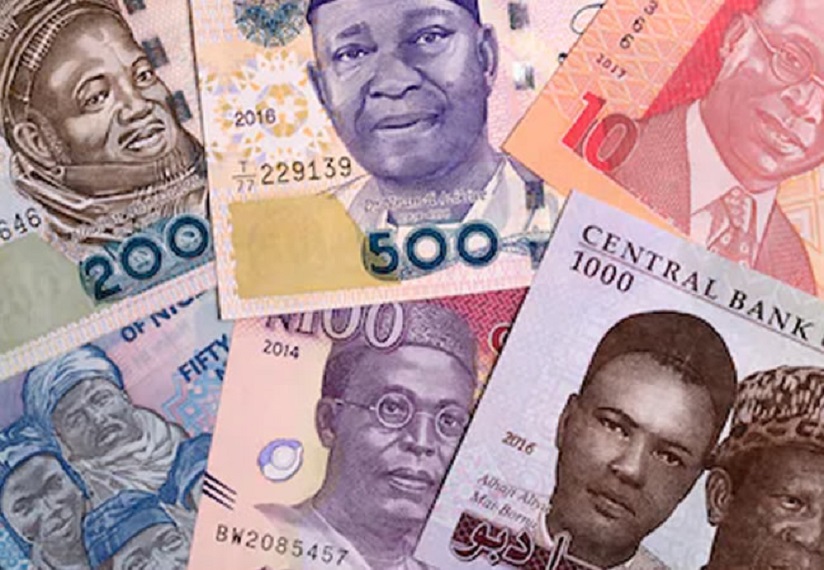Economy
Redesign Gone Wrong? – Costly Cashless

How does the central bank retrieve 84.5% of a country’s currency in circulation in just 90 days? This was one of the many questions seemingly begging for answers when Nigeria’s apex bank announced its plan to redesign the three higher value notes of the naira (N200, N500 and N1,000) on October 26, 2022.
Fast-forward three months and three weeks (a week before the general elections), and a majority of Nigerians are now confronted with a shortage of naira notes that is proving disruptive to lives and livelihoods.
Given the analyst consensus that a 90-day window was simply insufficient to complete the project, it is difficult to conceive a scenario where the Central Bank of Nigeria (CBN) did not anticipate the challenges which have accompanied this transition period.
President Muhammadu Buhari, in his address to Nigerians on February 16, 2023, said… “I am not unaware of the obstacles placed on the path of innocent Nigerians by unscrupulous officials in the banking industry, entrusted with the process of implementation of the new monetary policy. I am deeply pained and sincerely sympathise with you all over these unintended outcomes.”
In what appears to be a clear case of buck-passing by the federal government, the blame is being laid squarely on the banking industry’s purported failings and not any lapses in the policy’s design or hasty execution.
Depending on whom you ask, a performance appraisal of the CBN’s execution of the redesign project would range from grossly unprepared to poorly perceived.
In our opinion, the CBN failed to do enough through the media (television, radio, newspapers, new media) to effectively sensitise the public, particularly the rural dwellers, and manage expectations.
Most Nigerians assumed a simple exchange of old Naira notes for new ones. However, if we are to believe claims by the Kaduna State Governor, Nasir El-Rufai, the CBN printed circa N400 billion in new notes, leaving a shortfall of N2.3 trillion.
So, while the exercise has reportedly reeled in 80% (N2.1 trillion) of the N2.7 trillion held outside the banking system thus far, the average Nigerian is once again confronted with a test of resilience. Cash has become commoditized, hoarded by many, and now commanding outrageous premiums of up to 20-30% at Point-of-Sale (PoS) outlets.
The Road to Perdition is Famously paved with Good
Public outrage has degenerated into violent protests in some cities, with incidents of vandalism and arson at several banks’ facilities – and PoS outlets. The cash crunch and the uncertainty surrounding the policy are fanning a long-simmering fire of public resentment, triggered by deteriorating economic conditions and recently exacerbated by unending petrol shortages.
The result has been a significant loss of manhours, logistics constraints to many businesses and possible threats to the successful execution of the general elections.
The CBN, when launching the redesign project, outlined the objectives clearly. Perhaps its most compelling arguments centred on the need to combat terrorism and reduce counterfeiting.
The others largely revolved around driving the cashless policy through a shift away from cash and toward increased adoption of digital banking channels for transactions. This was underscored by a need to deepen financial inclusion (currently at 64%) and drive an efficient payment system that would improve the efficacy of monetary policy tools in combating inflation.
While the design of the policy gave room for underhand dealings by a privileged few, where the banking industry has really fallen short is in the capacity of the current digital payment infrastructure, which was already plagued by ‘transaction failures’ and an apparent inability to implement instant refunds, to handle the surge in transaction volumes.
For context, in the five years leading up to 2021, electronic payment surged by 386% to N272 trillion, accounting for over 94% of the entire value of transactions in Nigeria’s banking system. Financial institutions also responded accordingly by upscaling digital infrastructure to support the increasing adoption of electronic banking.
Recently, the Nigeria Inter-Bank Settlement System (NIBSS) reported a spike in the value of total cashless transactions in Nigeria to N39.58 trillion in January 2023 – a year-on-year increase of 45.41% – largely on the back of the CBN’s redesign and cash withdrawal policy.
Nevertheless, on evidence, the abrupt shift to electronic payments, which the current cash shortage has necessitated, has overwhelmed the banking industry’s digital payments infrastructure.
Nigerians are currently grappling with an unprecedented rate of electronic transaction failures. To further complicate matters, many transactions have not only failed, but refunds are taking days, even weeks in some instances, leaving many stranded and constraining commercial activity.
Unintended Consequences
The hardest hit by the policy have been the most vulnerable members of the population (the poor, the unbanked and the rural dwellers).
Nigeria is still a largely cash-dependent economy, with informal economic activity accounting for approximately 65% of GDP and being dominated by Micro, Small and Medium Enterprises (MSMEs). These MSMEs account for up to 96% of businesses and 86.3% of the national workforce. These are mostly cash-based businesses – particularly the micro-enterprises, which account for 99.8% of Nigeria’s 37.1 million MSMEs.
Given the low levels of education and exposure of a significant number of Nigerians in this category, many of whom live in rural areas with inadequate or non-existent telecommunications infrastructure, a quick and seamless transition to digital payment channels was always unlikely.
In addition, while mobile phone ownership in Nigeria is estimated at 81% by Enhancing Financial Innovation & Access (EFinA), internet penetration is still a mere 44.3%, as 60% of Nigerians live in rural areas where network outages were widespread even before the latest wave of transaction failures, and coverage was often non-existent, limiting access to traditional banking services. The Unstructured Supplementary Service Data (USSD), launched by banks and TelCos to enable deeper mobile banking penetration in communities lacking mobile data, has also been plagued by network-related setbacks.
The disruption to transactions, trade (domestic & foreign), productivity and all-round economic activity is likely to be significant enough to trigger a contraction in GDP in Q1’23 and possibly a loss of livelihoods for many.
Many cash-dependent businesses are being pushed to the brink. For example, cocoa farmers are currently unable to pay their labourers and transporters, jeopardising production and exports. The cash constraint is also likely to compel consumers to prioritise spending on necessities, leaving many businesses, particularly MSMEs, with decreased sales and heightened credit risks.
Worse still, living standards could decline further, particularly for many rural dwellers, as an inability to access cash could limit access to critical services like healthcare, stoking public discontent even further.
On the flip side, some of the biggest beneficiaries of the current lapses in electronic transactions have been Fintechs like Opay, Moniepoint, Paga, and Kuda, amongst others, which are reportedly far less prone to glitches and charge significantly lower transfer fees.
Whether this is down to lower transaction volumes than traditional banks or the capacity of their digital infrastructure, or both, it remains unclear.
However, getting traditional banks to invest in expanding their digital infrastructure in a period of rapid currency depreciation (most of the required infrastructure is imported) and, just as crucially, enhancing their cybersecurity will be crucial in convincing Nigerians to go cashless.
Some of the tier 1 banks spent an average of 5.4% of their operating expenses on ‘IT and related expenses” in 2021. Raising this expense in the face of shrinking margins would become increasingly difficult, as it is likely to further impinge on profitability.
Final Thoughts
Many contend that the solution to the immediate problem is rather straightforward: print more of the redesigned naira notes while gradually phasing out the old ones.
There is, however, a contrarian view suggesting that agreeing to the aforementioned is not to have a full appreciation of the nuances at play.
Perhaps the most significant takeaway from President Buhari’s recent address is clarity over who makes decisions and who must approve any deviation from the current position on which naira banknotes are legal tender.
The President concludes his address by noting that the policy’s success in minimising the influence of money in politics was a “positive departure from the past”. Given the timing of the policy, many argue that curbing vote-buying was the overarching objective.
The question is whether the long-term benefits of redesigning the naira outweigh the short-term costs and inconvenience of Nigerians being practically compelled to do away with cash. The hope is that the average Nigerian, now confronted with even greater hardship amid the current cost of living crises, is not a mere pawn in a political chess game.
Economy
Again, OPEC Cuts 2024, 2025 Oil Demand Forecasts

By Adedapo Adesanya
The Organisation of the Petroleum Exporting Countries (OPEC) has once again trimmed its 2024 and 2025 oil demand growth forecasts.
The bloc made this in its latest monthly oil market report for December 2024.
The 2024 world oil demand growth forecast is now put at 1.61 million barrels per day from the previous 1.82 million barrels per day.
For 2025, OPEC says the world oil demand growth forecast is now at 1.45 million barrels per day, which is 900,000 barrels per day lower than the 1.54 million barrels per day earlier quoted.
On the changes, the group said that the downgrade for this year owes to more bearish data received in the third quarter of 2024 while the projections for next year relate to the potential impact that will arise from US tariffs.
The oil cartel had kept the 2024 outlook unchanged until August, a view it had first taken in July 2023.
OPEC and its wider group of allies known as OPEC+ earlier this month delayed its plan to start raising output until April 2025 against a backdrop of falling prices.
Eight OPEC+ member countries – Saudi Arabia, Russia, Iraq, United Arab Emirates, Kuwait, Kazakhstan, Algeria, and Oman – decided to extend additional crude oil production cuts adopted in April 2023 and November 2023, due to weak demand and booming production outside the group.
In April 2023, these OPEC+ countries decided to reduce their oil production by over 1.65 million barrels per day as of May 2023 until the end of 2023. These production cuts were later extended to the end of 2024 and will now be extended until the end of December 2026.
In addition, in November 2023, these producers had agreed to voluntary output cuts totalling about 2.2 million barrels per day for the first quarter of 2024, in order to support prices and stabilise the market.
These additional production cuts were extended to the end of 2024 and will now be extended to the end of March 2025; they will then be gradually phased out on a monthly basis until the end of September 2026.
Members have made a series of deep output cuts since late 2022.
They are currently cutting output by a total of 5.86 million barrels per day, or about 5.7 per cent of global demand. Russia also announced plans to reduce its production by an extra 471,000 barrels per day in June 2024.
Economy
Aradel Holdings Acquires Equity Stake in Chappal Energies

By Aduragbemi Omiyale
A minority equity stake in Chappal Energies Mauritius Limited has been acquired by a Nigerian energy firm, Aradel Holdings Plc.
This deal came a few days after Chappal Energies purchased a 53.85 per cent equity stake in Equinor Nigeria Energy Company Limited (ENEC).
Chappal Energies went into the deal with Equinor to take part in the oil and gas lease OML 128, including the unitised 20.21 per cent stake in the Agbami oil field, operated by Chevron.
Since production started in 2008, the Agbami field has produced more than one billion barrels of oil, creating value for Nigerian society and various stakeholders.
As part of the deal, Chappal will assume the operatorship of OML 129, which includes several significant prospects and undeveloped discoveries (Nnwa, Bilah and Sehki).
The Nnwa discovery is part of the giant Nnwa-Doro field, a major gas resource with significant potential to deliver value for Nigeria.
In a separate transaction, on July 17, 2024, Chappal and Total Energies sealed an SPA for the acquisition by Chappal of 10 per cent of the SPDC JV.
The relevant parties to this transaction are working towards closing out this transaction and Ministerial Approval and NNPC consent to accede to the Joint Operating Agreement have been obtained.
“This acquisition is in line with diversifying our asset base, deepening our gas competencies and gaining access to offshore basins using low-risk approaches.
“We recognise the strategic role of gas in Nigeria’s energy future and are happy to expand our equity holding in this critical resource.
“We are committed to the cause of developing the significant value inherent in the assets, which will be extremely beneficial to the country.
“Aradel hopes to bring its proven execution competencies to bear in supporting Chappal’s development of these opportunities,” the chief executive of Aradel Holdings, Mr Adegbite Falade, stated.
Economy
Afriland Properties Lifts NASD OTC Securities Exchange by 0.04%

By Adedapo Adesanya
Afriland Properties Plc helped the NASD Over-the-Counter (OTC) Securities Exchange record a 0.04 per cent gain on Tuesday, December 10 as the share price of the property investment rose by 34 Kobo to N16.94 per unit from the preceding day’s N16.60 per unit.
As a result of this, the market capitalisation of the bourse went up by N380 million to remain relatively unchanged at N1.056 trillion like the previous trading day.
But the NASD Unlisted Security Index (NSI) closed higher at 3,014.36 points after it recorded an addition of 1.09 points to Monday’s closing value of 3,013.27 points.
The NASD OTC securities exchange recorded a price loser and it was Geo-Fluids Plc, which went down by 2 Kobo to close at N3.93 per share, in contrast to the preceding day’s N3.95 per share.
During the trading session, the volume of securities bought and sold by investors increased by 95.8 per cent to 2.4 million units from the 1.2 million securities traded in the preceding session.
However, the value of shares traded yesterday slumped by 3.7 per cent to N4.9 million from the N5.07 million recorded a day earlier, as the number of deals surged by 27.3 per cent to 14 deals from 11 deals.
Geo-Fluids Plc remained the most active stock by volume (year-to-date) with 1.7 billion units sold for N3.9 billion, trailed by Okitipupa Plc with 752.2 million units valued at N7.8 billion, and Afriland Properties Plc with 297.5 million units worth N5.3 million.
Also, Aradel Holdings Plc remained the most active stock by value (year-to-date) with 108.7 million units worth N89.2 billion, followed by Okitipupa Plc with 752.2 million units valued at N7.8 billion, and Afriland Properties Plc with 297.5 million units sold for N5.3 billion.
-

 Feature/OPED5 years ago
Feature/OPED5 years agoDavos was Different this year
-
Travel/Tourism8 years ago
Lagos Seals Western Lodge Hotel In Ikorodu
-

 Showbiz2 years ago
Showbiz2 years agoEstranged Lover Releases Videos of Empress Njamah Bathing
-

 Banking6 years ago
Banking6 years agoSort Codes of GTBank Branches in Nigeria
-

 Economy2 years ago
Economy2 years agoSubsidy Removal: CNG at N130 Per Litre Cheaper Than Petrol—IPMAN
-

 Banking2 years ago
Banking2 years agoFirst Bank Announces Planned Downtime
-

 Sports2 years ago
Sports2 years agoHighest Paid Nigerian Footballer – How Much Do Nigerian Footballers Earn
-

 Technology4 years ago
Technology4 years agoHow To Link Your MTN, Airtel, Glo, 9mobile Lines to NIN
























